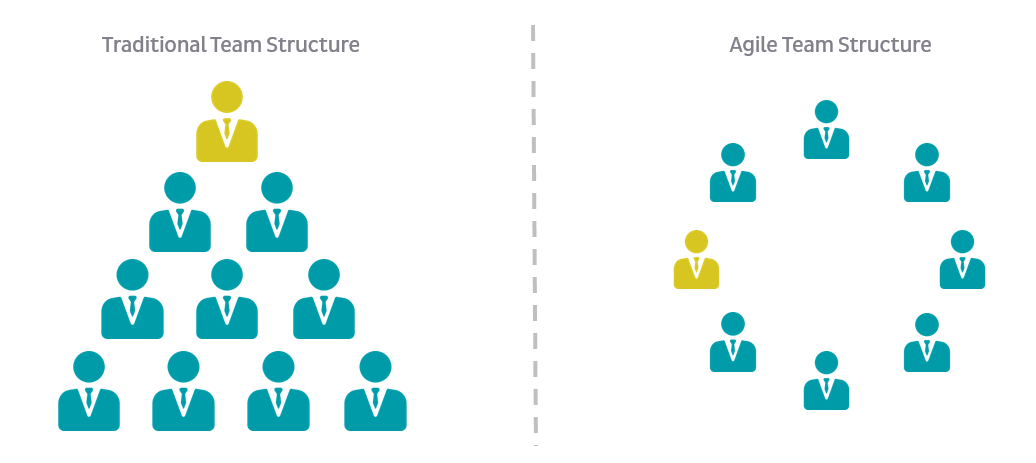The Role of Product Managers in Agile Development Teams
In an era where software development must be fast, flexible, and customer-centric, Agile methodology has emerged as the gold standard for many engineering teams. Central to Agile’s success is the Product Manager (PM), a role that balances business objectives, user needs, and technical feasibility. But what exactly does a Product Manager do in an Agile setting, and why is this role essential for delivering impactful products on time?
This article explores how Product Managers fit into Agile development teams, the key responsibilities they uphold, and the best practices for fostering collaboration with designers, developers, and other stakeholders. Whether you’re a start-up refining your minimum viable product (MVP) or an established enterprise scaling your tech solutions, understanding the Product Manager’s role can help drive greater alignment, efficiency, and innovation.
Table of Contents
- What Is Agile Development?
- Who Is the Product Manager?
- Key Responsibilities in Agile Teams
- Collaboration with Scrum Masters and Other Roles
- Challenges Faced by Product Managers
- Best Practices for Effective Product Management in Agile
- Examples of Successful Product Management in Agile
- Measuring Success and Key Metrics
- Conclusion

1. What Is Agile Development?
Agile development is a software development methodology that prioritizes iterative and incremental progress. Instead of following rigid, upfront planning, Agile teams break down the product development cycle into sprints, each typically lasting 1–4 weeks. At the end of each sprint, a working increment of the product is delivered, tested, and refined based on feedback.
Core Principles of Agile
- Customer Collaboration Over Contract Negotiation: Agile teams involve customers and stakeholders throughout the process, gathering frequent feedback.
- Responding to Change Over Following a Plan: Agile embraces change, even late in the project, if it benefits the final product.
- Working Software Over Comprehensive Documentation: While documentation is still important, delivering working functionality is paramount.
- Individuals and Interactions Over Processes and Tools: Teams that communicate openly and work collaboratively typically achieve better results.
In this dynamic environment, roles need to be flexible yet clearly defined. That’s where the Product Manager becomes indispensable.
2. Who Is the Product Manager?
A Product Manager serves as the bridge between business objectives, user expectations, and technical capabilities. While each organization may define the role slightly differently, common traits of a Product Manager include:
- Visionary Leadership: They create or interpret the product vision, aligning it with company goals.
- Customer Advocate: They continually gather user feedback, monitor market trends, and ensure the product meets real customer needs.
- Prioritization: They decide which features to build first, balancing user impact with development effort and business ROI.
- Cross-Functional Coordination: They collaborate with stakeholders—from marketing to engineering—to keep everyone aligned.
Although the Product Manager doesn’t usually handle people management in a direct reporting sense, they do manage the product’s roadmap, scope, and requirements.
3. Key Responsibilities in Agile Teams
3.1 Crafting the Product Vision
In Agile, product vision acts as the guiding star for the development team. The Product Manager crafts, maintains, and articulates this vision, ensuring the team understands why they’re building something, who it’s for, and how it aligns with larger business goals.
3.2 Owning the Product Backlog
The product backlog is a prioritized list of user stories, feature requests, and technical tasks. The Product Manager:
- Defines each backlog item’s acceptance criteria.
- Prioritizes items based on factors like business value, feasibility, and dependencies.
- Refines and updates the backlog continuously, considering new insights and stakeholder feedback.
3.3 Facilitating Sprint Planning
During Sprint Planning sessions, the Product Manager collaborates with developers and the Scrum Master (or team lead) to:
- Review top-priority backlog items.
- Clarify requirements and acceptance criteria.
- Confirm that the sprint goals are achievable within the given timeframe.
3.4 Stakeholder Communication
Product Managers frequently interface with:
- Executives: Sharing high-level progress, ROI metrics, and roadmaps.
- Design Teams: Ensuring UI/UX aligns with user and business objectives.
- Sales & Marketing: Providing updates on upcoming releases and features for go-to-market strategies.

4. Collaboration with Scrum Masters and Other Roles
In a typical Scrum setting, the Scrum Master focuses on removing impediments and facilitating the Agile process, while the Product Manager focuses on what to build next. Even though roles may overlap in small teams, clear delineation of responsibilities prevents conflicts.
Product Manager vs. Scrum Master
- Product Manager: Sets and prioritizes the product vision, backlog, and roadmap.
- Scrum Master: Coaches the team on Agile principles, ensures ceremonies run smoothly, and resolves day-to-day roadblocks.
Collaboration with Developers
Developers rely on the Product Manager for:
- Well-defined user stories and acceptance criteria.
- Immediate feedback when clarifications are needed.
- Timely decisions on backlog priorities.
Collaboration with UX Designers
Product Managers work closely with UX to ensure:
- User research aligns with actual market demand.
- The UI design meets user needs while staying technically feasible and consistent with the brand identity.
- UX/UI design goes along marketing conversions KPI's
5. Challenges Faced by Product Managers
5.1 Balancing Stakeholder Demands
Stakeholders—ranging from executives to customer representatives—often have conflicting requests and agendas. The Product Manager must weigh each demand against business value and feasibility.
5.2 Managing Scope Creep
With Agile’s openness to change, there’s a risk of never-ending feature additions. Successful Product Managers set boundaries, constantly reevaluate priorities, and ensure each new feature aligns with the product vision.
5.3 Technical Constraints
Not all ideas are easy or cost-effective to implement. The Product Manager must work with engineering to understand technical limitations and find workable compromises.
5.4 Time Constraints
In Agile, sprints have strict time boxes. It can be challenging to ensure features are well-defined and ready for development within that period. Refinement sessions and thorough backlog grooming become essential to mitigate this risk.

6. Best Practices for Effective Product Management in Agile
6.1 Maintain a Prioritized and Refined Backlog
A healthy product backlog is continuously updated to reflect changing requirements. This ensures the development team always knows what’s next and why.
6.2 Invest in Regular User Feedback
Whether through beta testing, focus groups, or analytics, user insights help refine the product direction. This feedback loop is invaluable in Agile, where iterative development allows you to adjust the roadmap quickly.
6.3 Foster Open Communication
Encourage a culture where developers feel comfortable asking questions, and stakeholders share feedback openly. Tools like Slack, Trello, or Jira can centralize conversations and make them transparent.
6.4 Use Data-Driven Decision-Making
Product Managers should base decisions on metrics such as:
- Conversion rates
- User satisfaction scores
- Feature adoption
- Cost-benefit analysis
Combining qualitative feedback with quantitative data leads to more informed prioritization.
6.5 Stay Ahead of Market Trends
A great Product Manager tracks competitors, emerging technologies, and user expectations. This foresight helps keep the product roadmap relevant and future-proof.
7. Examples of Successful Product Management in Agile
7.1 Spotify’s Squad Model
Spotify famously organized teams into “Squads”—autonomous, cross-functional groups that own specific product features. Here, Product Managers play a pivotal role in aligning squads with the company’s vision. This approach fosters innovation and speed, while ensuring each squad focuses on a defined slice of the product.
7.2 Airbnb’s Rapid Experimentation
Airbnb employs Agile principles to rapidly prototype and test new features. Product Managers at Airbnb define clear hypotheses for each iteration—e.g., “Will adding more photo slots increase booking rates?”—and measure outcomes with A/B tests. This method ensures the platform continually evolves with data-backed changes.
8. Measuring Success and Key Metrics
Agile Product Managers keep track of metrics that reflect both customer satisfaction and business value. Examples include:
- Velocity: The amount of work the team completes during each sprint.
- Lead Time: The time from a feature’s conception to its deployment.
- Customer Satisfaction (CSAT): Gauging how happy users are with recent updates or features.
- Return on Investment (ROI): Linking features or product changes back to revenue or cost savings.
- Adoption Rate: The percentage of users who engage with a new feature within a given timeframe.
These metrics offer clarity on whether the product is heading in the right direction or needs recalibration.
9. Conclusion
In Agile development teams, the Product Manager is a linchpin, translating broad business goals into concrete user stories and features that drive real value. By prioritizing tasks, collaborating with cross-functional teams, and listening to user feedback, Product Managers can keep the product both innovative and aligned with customer needs.
It’s a role that demands strategic thinking, communication savvy, and a deep commitment to iterative improvement. Companies that invest in capable Product Managers often see faster time-to-market, more user-centric products, and a more responsive approach to ever-shifting market demands. In today’s highly competitive environment, having an effective Product Manager is not just beneficial—it’s essential.
Looking to scale more efficiently? Connect with iDelsoft.com! We specialize in developing software and AI products, while helping startups and U.S. businesses hire top remote technical talent—at 70% less than the cost of a full-time U.S. hire. Schedule a call to learn more!





